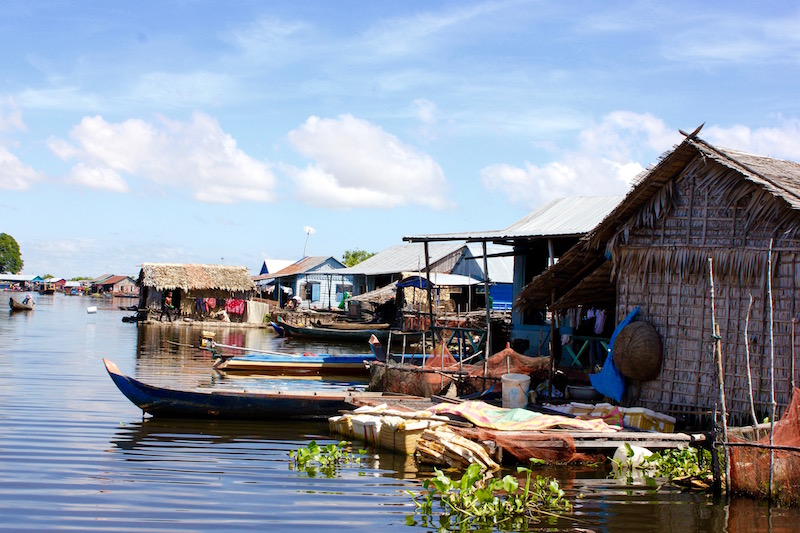Today is World Water Day, which brings attention to the world water crisis. 2.1 billion people around the globe don’t have access to clean drinking water at home – of those, 263 million have to travel for more than 30 minutes to collect water.
Anyone who has traveled to developing countries knows all the tips to avoid getting sick from contaminated water – asking for drinks without ice, avoiding fruits and vegetables that have been washed, and using bottled or filtered water to brush your teeth. And yet, many of us still experience occasional “tummy troubles.”
But can you imagine being at risk of contracting water-borne illnesses like cholera, dysentery, typhoid, and polio every day of your life? To help spread the word about the world water crisis, I put together this list to help educate travelers and encourage them to become part of the solution.
The World Water Crisis: How to Do Your Part
Take a tour that gives back.
Visit.org, a portal for travelers to find and book locally run, immersive experiences, promotes several tours that benefit communities’ clean water projects around the world, including:
- Eco Filtro in San Lorenzo el Cubo, Guatemala, which gives travelers a look at a water filter factory (each visit funds a water filter for a local school);
- Entanda Discovery Tour in Kijjude Village, Uganda, which teaches travelers about Ugandan hunting, leisure and cooking traditions; and
- RDO Trust in Ooty, India, which leads travelers on a trek through the Blue Mountains.
Join forces with NGOs working globally.
Two organizations leading the way to help end the world water crisis are Charity Water and The Thirst Project. Charity Water is a fundraising powerhouse that partners with rural communities in 24 countries to fund their clean water projects, while The Thirst Project, which runs projects in seven countries, educates young people about the crisis and empowers them to take action through fundraising and awareness campaigns.
Read A Long Walk to Water.
A Long Walk to Water is a young adult book that melds the true story of Salva Dut, a former “Lost Boy” of Sudan, with the fictional story of Nya, a girl who must walk two hours each way, twice every day, to a pond to fetch water for her family.
At the age of only 11, Salva had to flee his home and walk hundreds of miles to a refugee camp in Kenya. In 2003, without knowing a word of English, he was relocated to Rochester, N.Y., where he had to learn everything from how to turn on a light to how to drive. He later founded Water for South Sudan, Inc. to build wells in his native country.

I got to meet Salva in Boston following a talk he gave to 7th grade students.
Use your own water bottle.
I try very hard to limit my use of bottled water at home and abroad, since it is bad for the environment all the way around. So I always keep a collapsable water bottle in my carryon when I travel (It’s great to bring on flights – I fill it up at a water fountain after passing through security).
Since filtered water is sometimes hard to find, you can purify water on the go with a LifeStraw portable filter– I was given one by Ryan of GoodTrip Tours when we traveled together to Guatemala, and I thought it worked well. You also can use a GRAYL water bottle, which has a built-in filter.
Conserve water at home too.
Most of us in the Western world are blessed with an abundance of resources, so we often don’t think twice about turning on a faucet. But there is a lot you can do in your own home to conserve water, including:
- Installing water-efficient toilets, shower heads, faucets, and appliances;
- Turning off the water while you brush your teeth or wash dishes;
- Filling up the watering can while waiting for your shower or bath water to get hot;
- Taking your car to the car wash instead of doing it yourself;
- Planting climate-appropriate, drought-resistant grasses, shrubs and trees, and watering your lawn sparingly; and
- Reusing water around your home. For example, I always water plants with water I’ve used to cook pasta or boil eggs.
How has the world water crisis impacted your travels? What else can travelers do to reduce their water usage?
Pin it!



2 comments
These are some great tips, Brianne! I still remember how energy and water conscious my Costa Rican host family was. I could only turn the water on in the shower when I needed to rinse off–no leaving it running the whole time. It’s so easy to forget what a precious resource water is and take it for granted when I’m at home, so it’s always helpful to have these reminders. Also, it must have been an amazing experience to hear Salva speak to 7th-graders and to get to meet him–what an incredible story he has. Thanks for sharing!
Thanks, Naomi, for your comment! It’s amazing how easy it is take a valuable resource like clean water for granted when you’re used to having it any time you want it. I’ve also picked up conservation tricks when traveling that I’ve tried to incorporate into my daily life at home – but I still could do better!